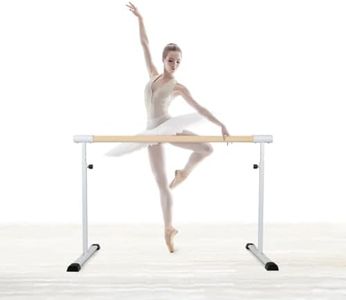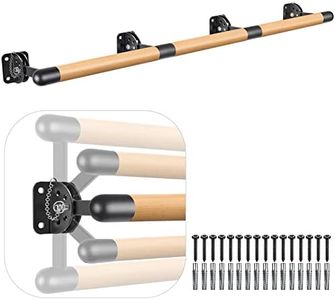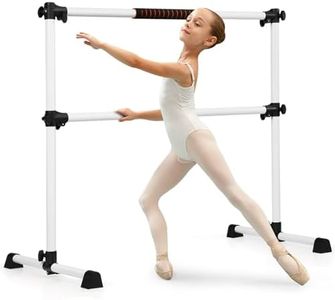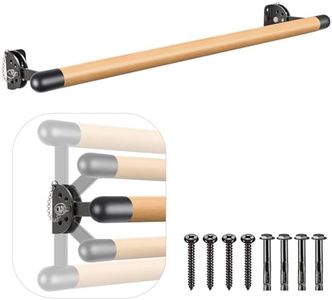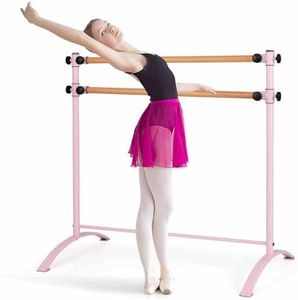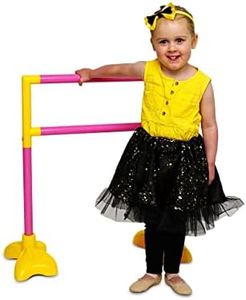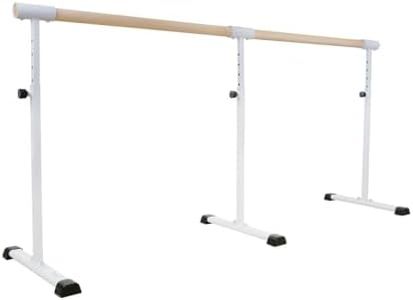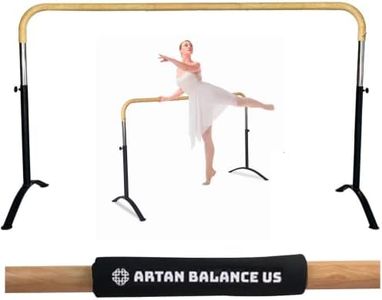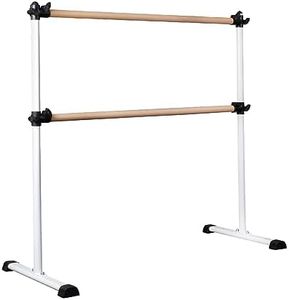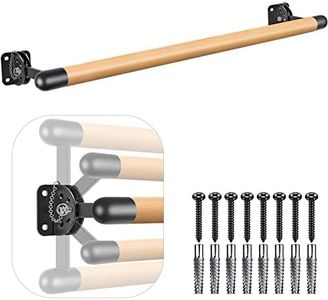We Use CookiesWe use cookies to enhance the security, performance,
functionality and for analytical and promotional activities. By continuing to browse this site you
are agreeing to our privacy policy
10 Best Ballet Barres
From leading brands and best sellers available on the web.Buying Guide for the Best Ballet Barres
Choosing the right ballet barre is essential for dancers of all levels, as it supports practice, improves balance, and helps build strong technique. Ballet barres are not just for professionals or studios; they are also widely used at home for exercises, stretching, and dance routines. Knowing what features to focus on will help you select a barre that is safe, comfortable, and best suited to your space and personal needs.LengthThe length of the ballet barre determines how much usable space you have for movements. Shorter barres (3 to 4 feet) are great for individual use and small spaces, while longer ones (up to 12 feet or more) are better for group settings or more freedom of movement. Think about where you will place the barre and how many people will use it at once. If it’s for solo home use and you have limited space, a short bar is very practical, but for larger groups or a shared studio, a longer barre is ideal.
HeightBarre height is important for comfort and proper technique. Most barres fall within 31 to 46 inches from the floor. A standard height for adults is around 42 inches, while children are more comfortable with heights closer to 32 inches. If you have users of different ages or heights, consider an adjustable barre, which allows you to set the height as needed. Choose a barre height so that when you rest your hand on it, your arm is slightly bent and your shoulder relaxed.
PortabilityPortability refers to how easily you can move or store the barre. Some barres are fixed to the wall or floor, providing maximum stability but can’t be moved. Others are freestanding or foldable, making them easy to transport, reposition, or put away after use. If your space is multipurpose or you need to move the barre between locations, a portable or collapsible barre is best. If you have a permanent dance area, a fixed barre might feel more secure.
MaterialBallet barres are commonly made from wood, metal, or a combination of both. Wood is smooth, feels warmer to the touch, and is often preferred for a classic dance studio feel. Metal (often aluminum or steel) is modern, lightweight, and often easier to clean, but can feel cold and slippery. Pick wood for a traditional experience and comfort, or metal for durability and ease of maintenance. Your environment (humidity, intended use) can also help you decide.
Stability/Weight CapacityStability is how secure the barre feels during use. A stable barre won’t wobble or tip when you lean or stretch against it. Heavier, wider bases or mounted barres offer the most stability, making them better for intensive exercises. Lighter, more portable options can sometimes shift if used vigorously. If you plan on doing deep stretches or strength moves, prioritize a heavy or well-anchored barre. For light workouts or basic warm-ups, lighter options are usually enough.
Single vs. Double BarreSingle barres consist of one horizontal rail, while double barres have two rails at different heights. Double barres are useful if people of different heights will use them, or if you want to use one rail for support and another for stretching. Singles are simpler and lighter, better for solo adult users. If you share the barre with others, have children, or want more versatility, consider a double barre.
